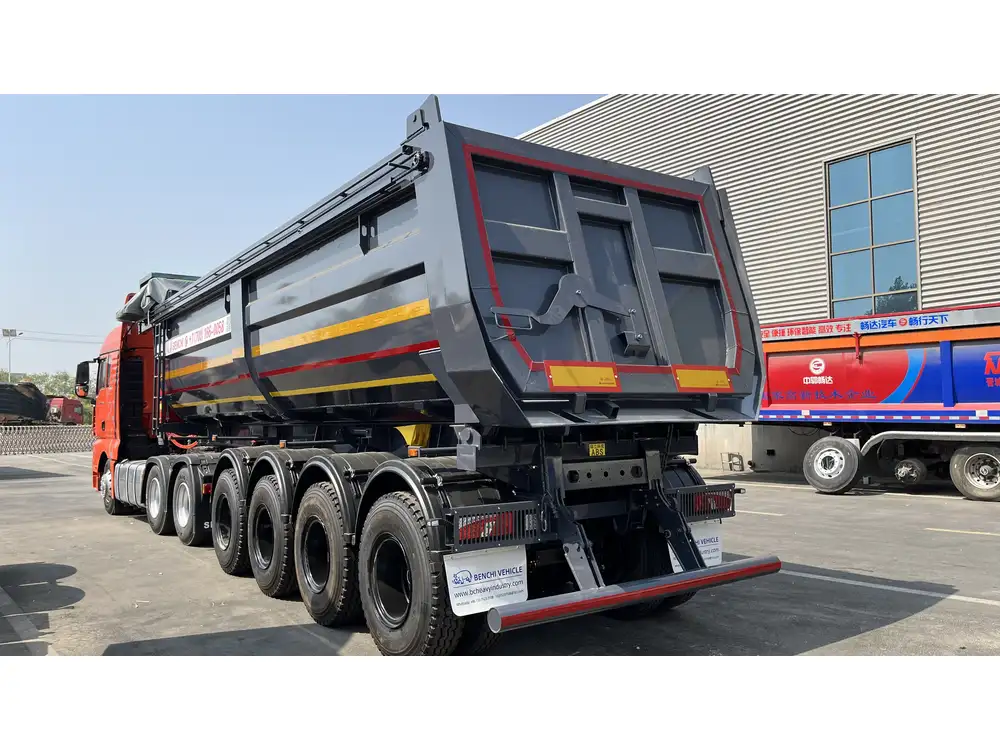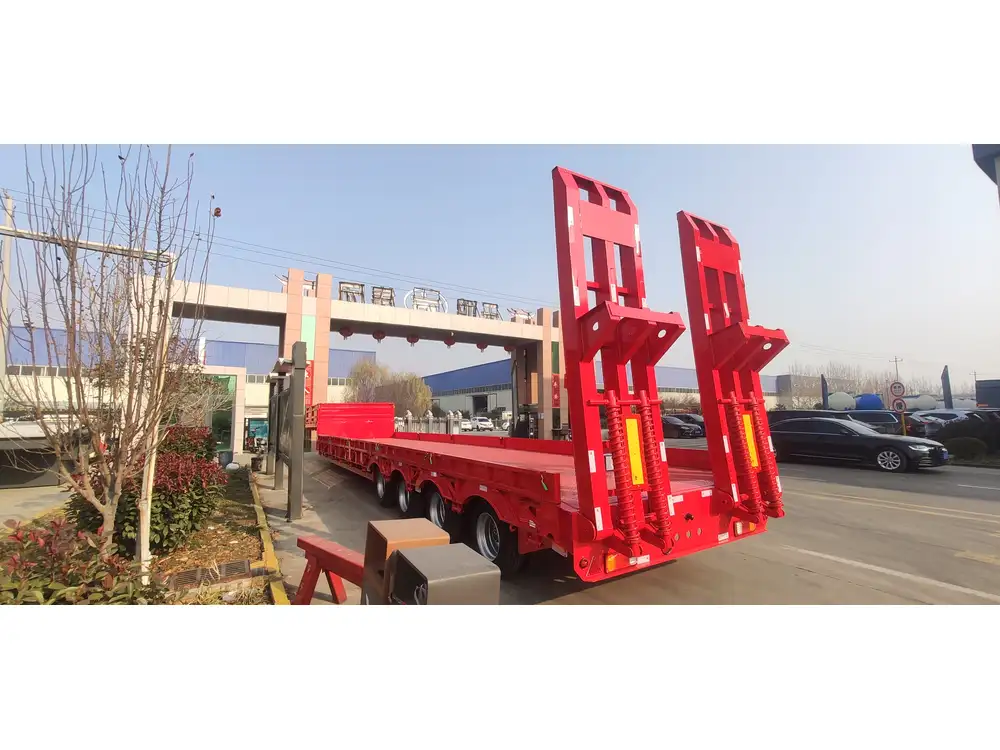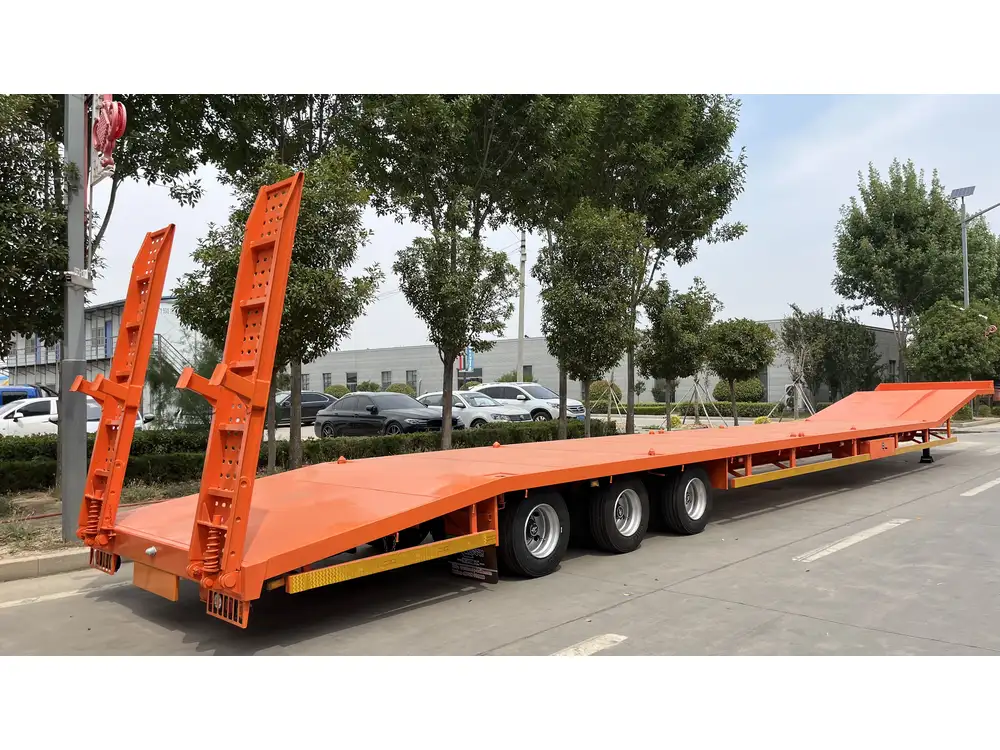Understanding the regulations and requirements surrounding the operation of semi-trailers in Canada is crucial for manufacturers, operators, and logistics companies. The fixed 4-axle semi-trailer configuration has gained popularity for its ability to efficiently carry heavy loads. This article delves deep into the specifics of whether fixed 4-axle semi-trailers are permissible in Canada, addressing various facets of the subject that potential users, manufacturers, and policy-makers need to consider.
Understanding Fixed 4-Axle Semi-Trailers
What Constitutes a Fixed 4-Axle Semi-Trailer?
A fixed 4-axle semi-trailer typically consists of a chassis mounted on four axles at fixed positions. This configuration is designed to optimize load distribution, enhance stability, and improve maneuverability when towing. Each axle plays a critical role in how weight is transferred across the trailer, impacting both performance and compliance with legal weight limits.

Common Applications
Fixed 4-axle semi-trailers are particularly effective in several industries:
- Construction: Transporting heavy machinery and materials.
- Agriculture: Hauling bulk products and supplies.
- Logistics and Freight: Delivering freight over long distances.
- Specialized Cargo: Catering to specific loads that require unique handling.
Regulatory Framework in Canada
National and Provincial Regulations
To assess the legality of operating fixed 4-axle semi-trailers in Canada, one must navigate a complex regulatory landscape consisting of both federal and provincial regulations.

1. Federal Regulations
Under the Motor Vehicle Transport Act, Transport Canada outlines baseline requirements for commercial vehicles, including semi-trailers. This legislation stipulates the maximum allowable dimensions and weights, along with safety and environmental standards.
2. Provincial Regulations
Each province may impose additional requirements. For example, British Columbia may have distinct regulations regarding weight restrictions on highways compared to Ontario. Therefore, understanding local laws is critical for compliance.
| Province | Max Weight (with Load) | Trailer Length Limit |
|---|---|---|
| British Columbia | 63,500 kg | 16.2 m |
| Ontario | 41,500 kg | 14.65 m |
| Alberta | 63,500 kg | 16.2 m |
Comparing Usability Across Provinces
Navigating the legal framework is akin to weaving through a labyrinth. Below is a comparison of various provinces regarding fixed 4-axle semi-trailer usage:
| Province | Allowed Axle Configuration | Additional Requirements |
|---|---|---|
| British Columbia | Yes | Permits for oversized loads |
| Ontario | Yes | Roads must be approved for heavy loads |
| Quebec | Yes, with conditions | Special identification for heavier units |
| Alberta | Yes | Compliance with provincial weight enforcement |

Key Considerations for Operating Fixed 4-Axle Semi-Trailers
Weight Distribution
Efficient weight distribution is essential for both safety and performance. The fixed axle configuration should abide by the following principles:
- Manufacturer Specifications: Always adhere to the limits provided by the manufacturer, as exceeding them can result in structural failures.
- Load Balance: Ensure that the weight is evenly distributed across all axles to avoid penalties and enhance safety.
Safety Standards
Compliance with Canadian safety standards cannot be overstated. The Canadian Standards Association (CSA) provides guidelines that manufacturers must follow, including:
- Braking Systems: Sufficient and reliable braking mechanisms are essential.
- Lighting and Signage: Proper illumination and visibility for night operations are mandated.
- Tire Requirements: Tires must meet specific load ratings and tread depth standards.

Insurance Considerations
Proper insurance coverage tailored to the nature and scale of operations is essential. Factors that affect rates include:
- Type of cargo being transported.
- Radius of operation.
- Previous claims history.
Environmental Impact and Sustainability
As regulations tighten around environmental practices, ensuring your fixed 4-axle semi-trailer adheres to eco-friendly standards is increasingly important. Key factors include:
- Fuel Efficiency: Modern designs focus on minimizing fuel consumption.
- Aerodynamic Features: Incorporating designs that reduce drag can lower emissions.
Frequently Asked Questions (FAQs)

1. Are Fixed 4-Axle Semi-Trailers Suitable for All Types of Cargo?
Not necessarily. While they are versatile, the nature of the cargo affects suitability. For instance, fragile items might require soft-sided trailers, whereas heavier materials can leverage the ruggedness of 4-axle configurations.
2. What Are the Typical Costs of Operating a Fixed 4-Axle Semi-Trailer?
Costs can vary based on several factors, including:
- Fuel expenses: Based on route efficiency and fuel prices.
- Maintenance: Regular inspections and part replacements should be factored in.
- Insurance and licensing: Dependent on cargo type and operating province.
3. What Permits Are Required for Overweight Loads?
If a fixed 4-axle semi-trailer is to operate over the legal weight thresholds, special permits from local transport authorities are a necessity. This process often includes route planning to avoid low bridges or weak road infrastructures.

Tips for Compliance and Best Practices
Checklists for Successful Operation
To enhance compliance and streamline operations, consider utilizing checklists:
Pre-Trip Checklist:
- Inspect brakes, lights, and tires.
- Documentation: Ensure all necessary permits are available.
Post-Trip Evaluation:
- Condition of trailers.
- Record any incidents for future reference.
Regular Maintenance:
- Schedule regular checks to ensure compliance with CSA standards.
- Keep maintenance records readily accessible.
Embrace Technology
Utilizing fleet management software can significantly enhance operational efficiency. Such systems help monitor:
- Real-time vehicle status.
- Route optimization to save fuel.
- Maintenance schedules and adherence.

Conclusion: The Future of 4-Axle Semi-Trailers in Canada
The evolution of semi-trailers, particularly fixed 4-axle models, paves the way for innovative transport solutions in Canada. By staying informed about the regulatory climate, ensuring compliance with safety standards, and leveraging technology, companies can maximize their operational success. It is not merely about whether fixed 4-axle semi-trailers are allowed in Canada; it is fundamentally about how to utilize them effectively, sustainably, and safely within the evolving landscape of transportation logistics. By adopting a holistic view that incorporates compliance, safety, and technology, operators can position themselves competitively in the market and streamline their operations while adhering to regulations.
As the transportation landscape continues to change, the key to thriving lies in adaptability, foresight, and a proactive approach to regulatory compliance and environmental sustainability.



